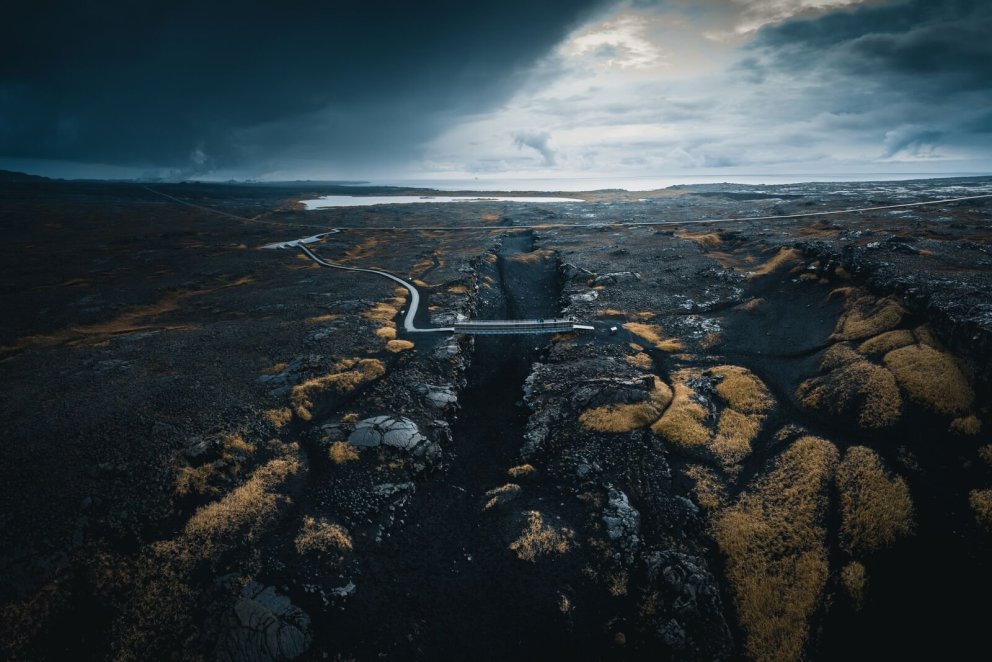When is the best time to visit the Bridge Between Continents
Ask any local what they recommend you should see while you’re travelling around the Reykjanes peninsula and they’ll say that you need to visit the Bridge between Continents. This must-see spot is easy to reach and requires little effort to reach. So what makes it special and when is the best time to visit the Bridge between Continents? Let’s find out.
What is the Bridge between Continents?
This site forms part of the Reykjanes UNESCO Global Geopark. The earth’s crust is formed of many tectonic plates. These cover a viscous layer of molten rock known as the mantle and are thus able to move around as the heat beneath the crust creates convection currents. There are several types of plate boundaries where these plates meet.
In Iceland, the type of plate boundary is a divergent one, also called a constructive boundary. Where two tectonic plates pull apart, new land is created between them. The process is too slow to watch with the naked eye, but it’s happening nevertheless. The Bridge between Continents on the Reykjanes peninsula covers a sizeable fissure where you can see the cleft in the earth’s surface.
What’s the best time to visit?
Let’s start with the time of year. The Bridge between Continents is reached on good tarmac roads and the journey time from Keflavik International Airport is around 25 minutes. This means that it’s pretty much a year-round destination, unlike places like the Icelandic Highlands that can only be accessed during the summer months.
Even if there’s snow on the ground, it’s still possible to visit the Bridge between Continents. Make sure you are wearing boots that have a good grip, in case the path is icy, and wrap up warm against the cold weather. But aside from the fact you’ll have to walk from your vehicle to the footbridge itself, there’s no reason why you can’t visit during the winter months.
In fact, heading there in the shoulder seasons of spring and autumn, or in winter, might be preferable. Iceland is a lot busier during the summer months and as this place is so close to the airport, if you want to have a good chance of getting the place to yourself, then going outside peak season might be a bonus. That said, on a fine, calm summer’s day with blue skies overhead, this place is a stunner.
What about time of day? This is a place you’re going to want to check out in daylight if it’s your first visit. Though you won’t see any movement on the ground beneath your feet, there’s something pretty cool about standing on land that you know is moving apart – even if it’s doing so really slowly.
From September to April, you might want to make a return trip after dark. If the Northern Lights forecast is looking promising, with significant solar activity and clear skies, this is a good place to watch them dance across the dark sky. That’s especially the case if you’re a keen photographer as the bridge itself gives you some foreground interest while those ethereal green ribbons swirl overhead.
Is there any time you might not want to visit?
The Reykjanes peninsula, lying where it does at the south-western tip of Iceland, can be prone to strong winds. Even in summer, the relatively exposed position of the Bridge between Continents can make the site prone to gusty conditions. While it might not put you off visiting, it’s definitely something to be aware of. If you’ve just picked up your rental car, for instance, pay particular attention to which direction you park and hang on to the doors as you open them.
Another thing to bear in mind is the rainfall forecast. The Bridge between Continents is an outdoor attraction with no shelter should the clouds burst. Of course, many showers in Iceland blow over quickly, so it might simply be a case of waiting in your vehicle in the car park until the rain eases. Regardless, the Icelandic weather is unlikely to be a deal breaker, so long as you are wearing appropriate clothing.
Remember, this is one of the top attractions in Reykjanes that locals recommend, so you’re going to want to come here no matter what time of year you visit.

